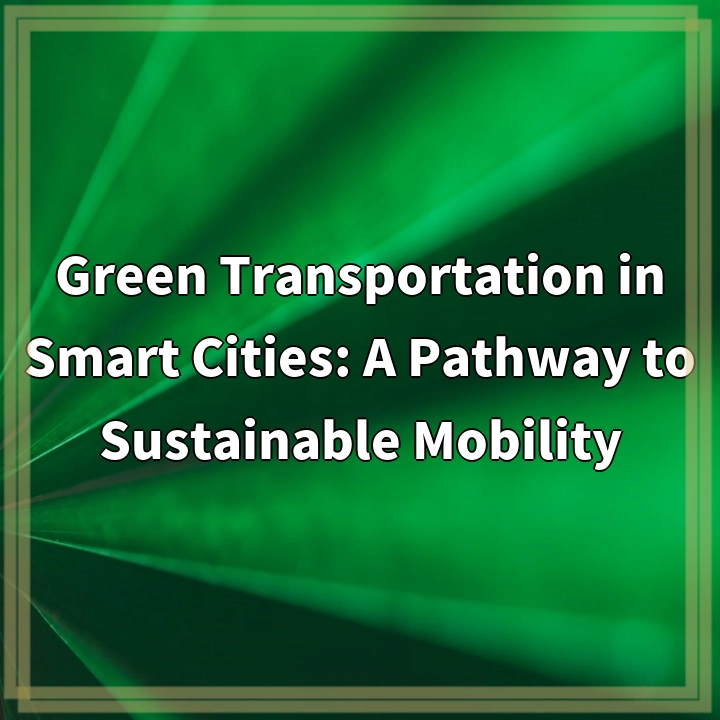
What is Green Transportation in Smart Cities?
Green transportation in smart cities refers to the implementation of sustainable and environmentally-friendly modes of transportation in urban areas that are equipped with advanced technological infrastructure. It involves utilizing cleaner energy sources, reducing greenhouse gas emissions, and promoting the use of public transportation, walking, cycling, and electric vehicles.
Real-World Problems Associated with Green Transportation in Smart Cities
1. Infrastructure Challenges
One of the main challenges in implementing green transportation in smart cities is the need for significant infrastructure development. Electric vehicle charging stations, bike lanes, and public transportation systems need to be established and integrated into existing urban infrastructures. The cost and logistics of implementing these changes can be a barrier to widespread adoption.
2. Limited Awareness and Incentives
A lack of awareness and understanding among city residents about the benefits and availability of green transportation options can hinder adoption. Many people may still be unaware of the environmental impacts of traditional transportation, as well as the incentives and benefits provided by using sustainable modes of transportation.
3. Policy and Implementation Challenges
The development and implementation of effective policies and regulations to support green transportation in smart cities can be complex. It requires coordination between different government departments, private sector stakeholders, and community organizations, all with varying interests and priorities. Balancing the needs of different modes of transportation and ensuring equitable access for all can be challenging.
4. Economic Viability and Affordability
Investments in green transportation infrastructure and technology can be costly and may require significant public and private funding. The affordability and accessibility of sustainable transportation options, such as electric vehicles or public transit, can be a barrier for lower-income communities.
5. Behavioral Change
Encouraging behavioral change, such as shifting from private car usage to public transportation or active modes like cycling or walking, can be challenging. Long-established habits, convenience, and perceived inconveniences of alternative transportation options can hinder the adoption of greener modes of travel.

Solutions for Green Transportation in Smart Cities
1. Infrastructure Development and Integration
To overcome the infrastructure challenges, it is important for smart cities to prioritize the development and integration of green transportation infrastructure. This includes expanding electric vehicle charging networks, constructing dedicated bike lanes and pedestrian-friendly paths, and improving public transportation systems. Collaborations between public and private sectors can help secure funding and accelerate the implementation of these projects.
2. Awareness Campaigns and Incentives
Increasing awareness among city residents about the advantages of green transportation options is crucial. Governments and organizations should invest in awareness campaigns to educate the public about the environmental benefits and cost savings associated with using sustainable modes of transportation. Additionally, providing incentives such as subsidies for electric vehicles or discounted public transportation fares can further motivate people to adopt greener transportation practices.
3. Policy Development and Collaboration
Smart cities need to establish comprehensive and supportive policies for green transportation. This involves collaboration between government departments, private sector stakeholders, and community organizations to design and implement effective regulations. By integrating sustainability goals into the urban planning process, cities can ensure that transportation systems are designed to prioritize environmentally-friendly options and strive for equitable access for all residents.
4. Financial Support and Affordability
To address the economic viability of green transportation, governments can provide financial support and incentives. This can include grants, tax benefits, or low-interest loans for individuals and businesses to invest in electric vehicles or sustainable transportation infrastructure. Making sustainable transportation options affordable and accessible to all income levels is essential to promote inclusivity and reduce dependence on polluting alternatives.
5. Behavioral Change and Education
Promoting behavioral change requires continuous education and encouragement. Public awareness campaigns can emphasize the health benefits, cost savings, and reduced carbon footprint associated with green transportation choices. Creating supportive environments, such as by enhancing bike-sharing programs or providing safe and convenient walking routes, can further incentivize people to shift towards more sustainable modes of transportation.















